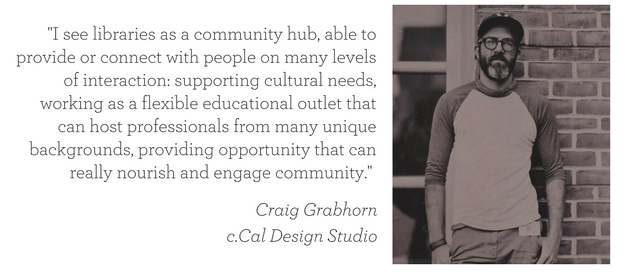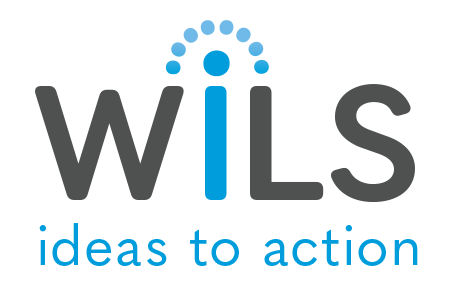
At WiLS, we want to bring valuable information to our library partners, including information about the missions and big ideas of the vendors they may already do business with. Each month, WiLS interviews a vendor partner in order to bridge the gap and open the door to valuable collaborations. This month, we share insights from Craig Grabhorn of c.Cal Design Studio.
Tell us about your company’s background.
I have been working as a designer for 12 years in multiple avenues of design. In this time I have worked developing marketing materials, clothing, furniture, and interior spaces. I work creatively as a painter and printmaker which has informed what has been an easy path to develop my workshops.
Why do you, personally, choose to work with libraries?
I see libraries as a community hub, able to provide or connect with people on many levels of interaction: supporting cultural needs, working as a flexible educational outlet that can host professionals from many unique backgrounds, providing opportunity that can really nourish and engage community. My personal creative work carries a dialog around place, our histories, and what we choose to carry with us as heirloom. In the creative making of the workshops, I try to weave in these ideas into conversation as much as the participants will allow. The diversity of libraries has really shared a wide range of perspective, which in turn allows me to expand and strengthen my programs.
What do you like to know about the libraries you work with? What helps you better understand their needs?
I really like to understand the neighborhood and who is utilizing the library. I’ve found when I have had opportunity to work in different neighborhood branch libraries of a city that each branch has it’s own unique pulse. Staff is usually a great place to start in understanding the dynamics of a branch or neighborhood. Beyond that I am able to gain insight during the workshops once participants have let down their guard. have fun, and share their stories.
What big ideas are you working on? What problems are being solved?
I’m currently developing a program that takes my current and a few new workshops to underserved areas in Wisconsin. In talks with educators from around the state, they have expressed concern for a lack of access to cultural programming. This is due to several factors from what I have found. Geographic location seems to be the largest barrier; I have been developing solutions and ways to open and facilitate a more regional cultural creative dialog. There are so many historical and culturally rich sites and I have been working on identifying them and planning workshops that can incorporate those as a point of reference for workshop topics and conversation.
This interest was peeked a few years back while I was living near Dodgeville, Wisconsin, focusing on a body of work that would be my reflection of beautiful landscape known as the Driftless. In my time exploring and learning histories of the valleys, families, and characters that have spent time there, I crossed a German immigrant Paul Seifert who had painted the region in the late 1800s. Seifert would set out to meet farmers who would pay him to paint a view of their farm, much like today’s aerial photo. For me the historical documentation of the region is of special significance and tells stories of what it was like to live in the late 1800s in the region. Where I really made connection and found inspiration for my work was in his consideration of the seasonal color changes and how it could change the scenes of his work so dramatically.
My hope is, through creative workshops, to create a dialog to peek interest in both our histories and our abilities to be creative. To inspire people to ask questions, learn more about our ancestors while exploring creative problem solving.
How can librarians become partners in your program development?
I think librarians are the perfect support for understanding and finding cultural significances and histories in communities. Sharing our local histories starts a dialog that we all can find connection or common place through. I’m always on the hunt to find more stories like Paul Seifert’s, if you think you have one to share I’d love to hear it.
——————————
This interview is part of a series of interviews with both WiLS library and vendor partners. Your feedback is appreciated. If you have any to offer on this article, or suggestions for upcoming interviews, contact Andrea Coffin at acoffin@wils.org.
